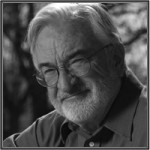 From Thoreau’s glacial puddle to Muir’s tectonic Sierras to Annie Dillard’s little creek, nature writers have sought for over 200 years to bring landscape into their essays with all the power of real characters. Arguably, with his landscape-laden Desert Solitaire, Ed Abbey launched modern nature writing. Those of us today who would write of nature, especially in the West, still have a vast supply of natural wonders and beauty around us to bring into our work. How can landscape become a character? Let’s ask what makes for memorable human characters.
From Thoreau’s glacial puddle to Muir’s tectonic Sierras to Annie Dillard’s little creek, nature writers have sought for over 200 years to bring landscape into their essays with all the power of real characters. Arguably, with his landscape-laden Desert Solitaire, Ed Abbey launched modern nature writing. Those of us today who would write of nature, especially in the West, still have a vast supply of natural wonders and beauty around us to bring into our work. How can landscape become a character? Let’s ask what makes for memorable human characters.
First, more than cardboard cutouts, characters have texture and depth, and a good author will turn to several senses to capture these finer points. Sharp vision is always useful. But nature reaches us, often vividly, through touch, smell, sound, even taste in ways that humans cannot. Imagine caressing an alligator bark juniper with your eyes closed. Listen to how wind songs differ sliding through junipers vs. pines. Did you know Ponderosa pines are unique? Their bark smells like vanilla.
Second, great characters are alive, vibrant, never still. And so with Nature. Behind the pretty scenery, nature teems with dynamics for an author’s use. Nothing is static. Evolution is a work in progress, rending, rebuilding, creating wholly new forms from the shards. Even the lowly lichen, neither plant nor animal, sits there seemingly immobile on its granite boulder, quietly dissolving its host.
Characters have moods. To give Nature moods is anthropomorphic. But the experience of Nature creates moods in others, in other characters, in the reader. The trauma and threat of violent storms are the easy parts. More challenging to the writer are Nature’s softer tones, the quiet promise of morning dew in Spring, the foreboding of a temperature shift in the breeze. As with humans, subtle mood changes wrought by Nature can run deep with meaning.
Characters interact with each other. Dominance, dependence, synergy, all abound in the intricately woven fabric of the natural world. The easy ones for the writer are the least interesting, when some natural element forces an altered path, a behavioral change in another character. The blizzard that drives a ship off course, a canyon that redirects the wanderer. More important are those bits of landscape that bring fundamental moral or intellectual change in a character. A mountain standing there, infusing strength into a quailing man, a bee alight on a columbine suggesting with fragile beauty the depth of our dependence on wilderness, the Milky Way blazing in darkest sky, telling us how infinitesimally small and insignificant we really are.
If we write the land into our essays as character, and the character that land interacts with most deeply is the reader, then we will have truly created art.
Do you have a recent story that might be enriched if you brought in the natural world?





